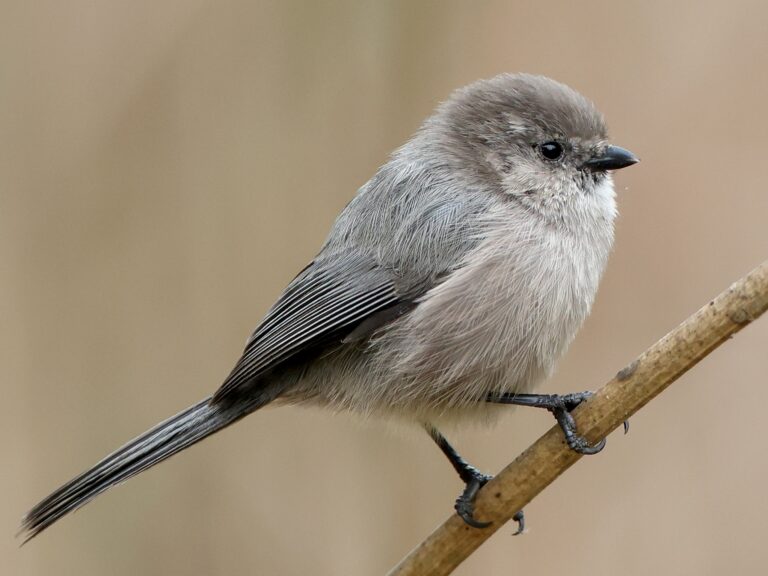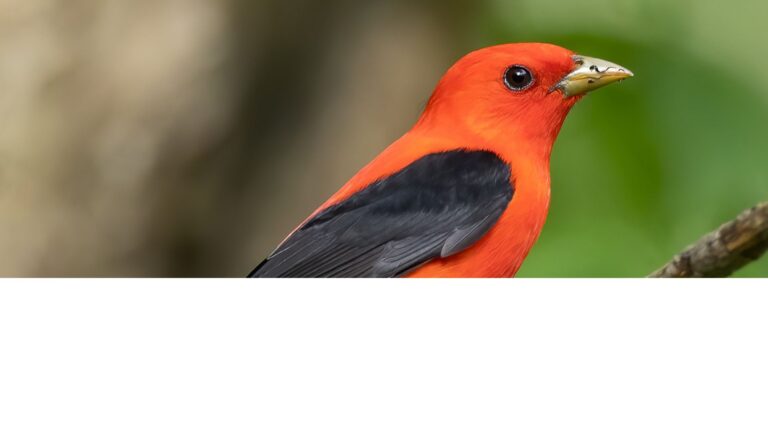10 Fascinating Facts About Ospreys: The Remarkable Fish Hawks That Rule Our Skies
Ospreys are remarkable birds of prey that have captivated bird watchers and researchers alike for centuries. These magnificent raptors, known for their impressive fishing skills, have adapted uniquely to life near bodies of water across much of the globe.
Ospreys are exceptional hunters and their hunting prowess is unmatched among birds of prey.
Ospreys are also known as fish hawks due to their unrivaled fishing skills.
Ospreys can be found on every continent except Antarctica, making them one of the most widespread raptor species in the world.
With their keen eyesight, ospreys can spot fish from great distances.
Their dramatic recovery from near extinction in the mid-20th century represents one of conservation’s greatest success stories. Once severely threatened by DDT and other pesticides, osprey populations have rebounded significantly in North America and beyond.
Their ability to adapt to human structures for nesting has helped their comeback, with many pairs now building nests on platforms specifically designed for them.
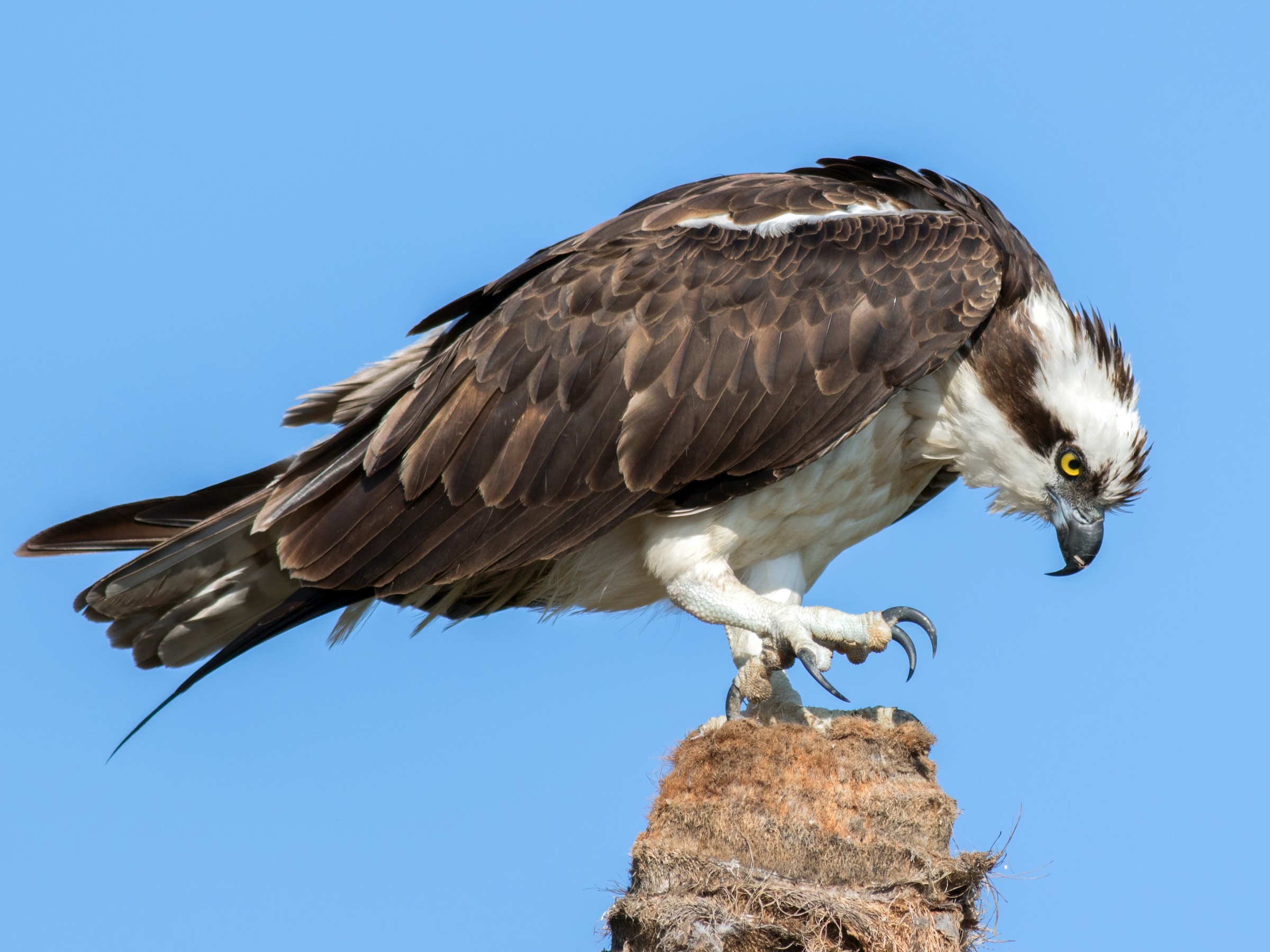
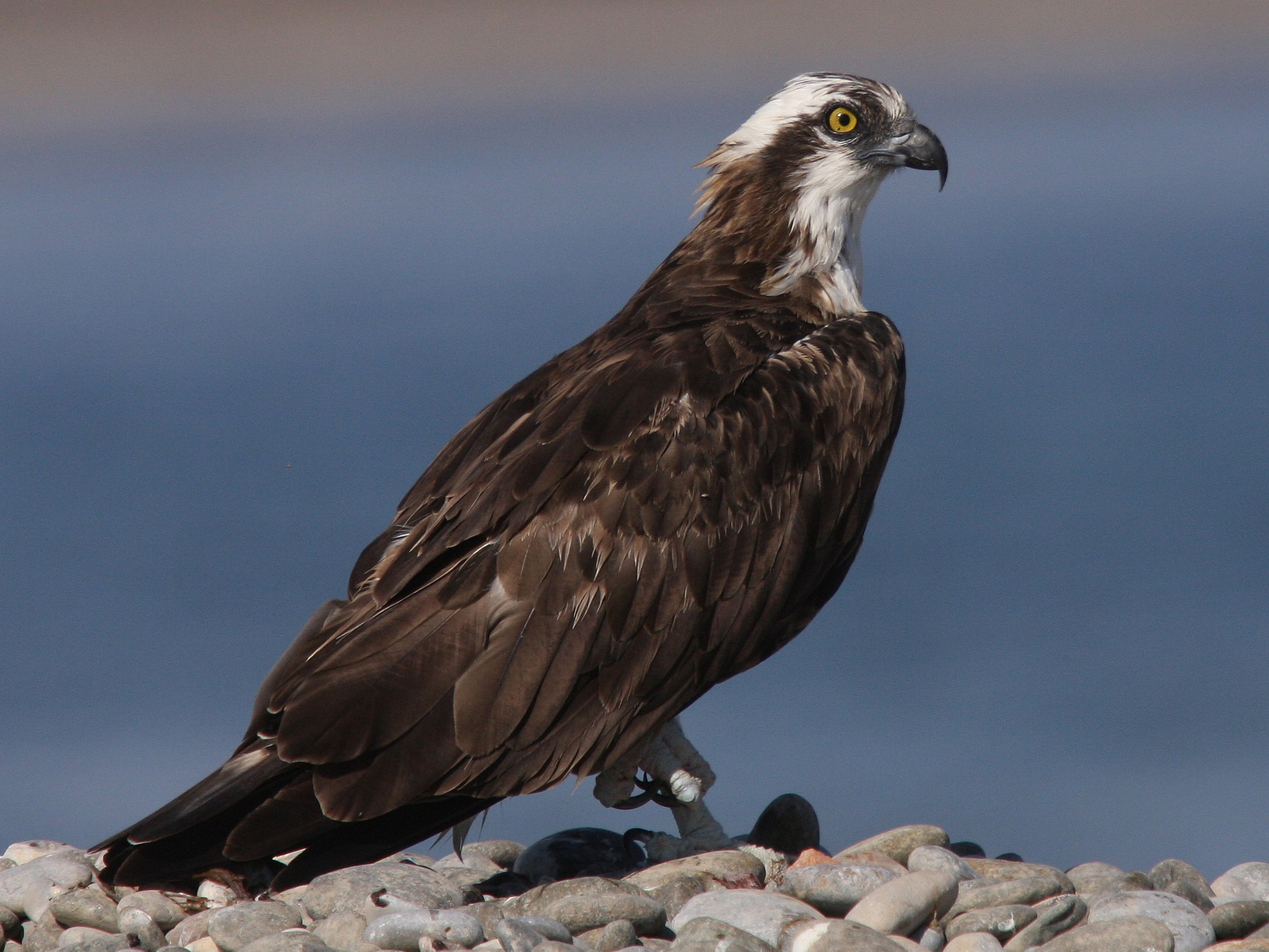
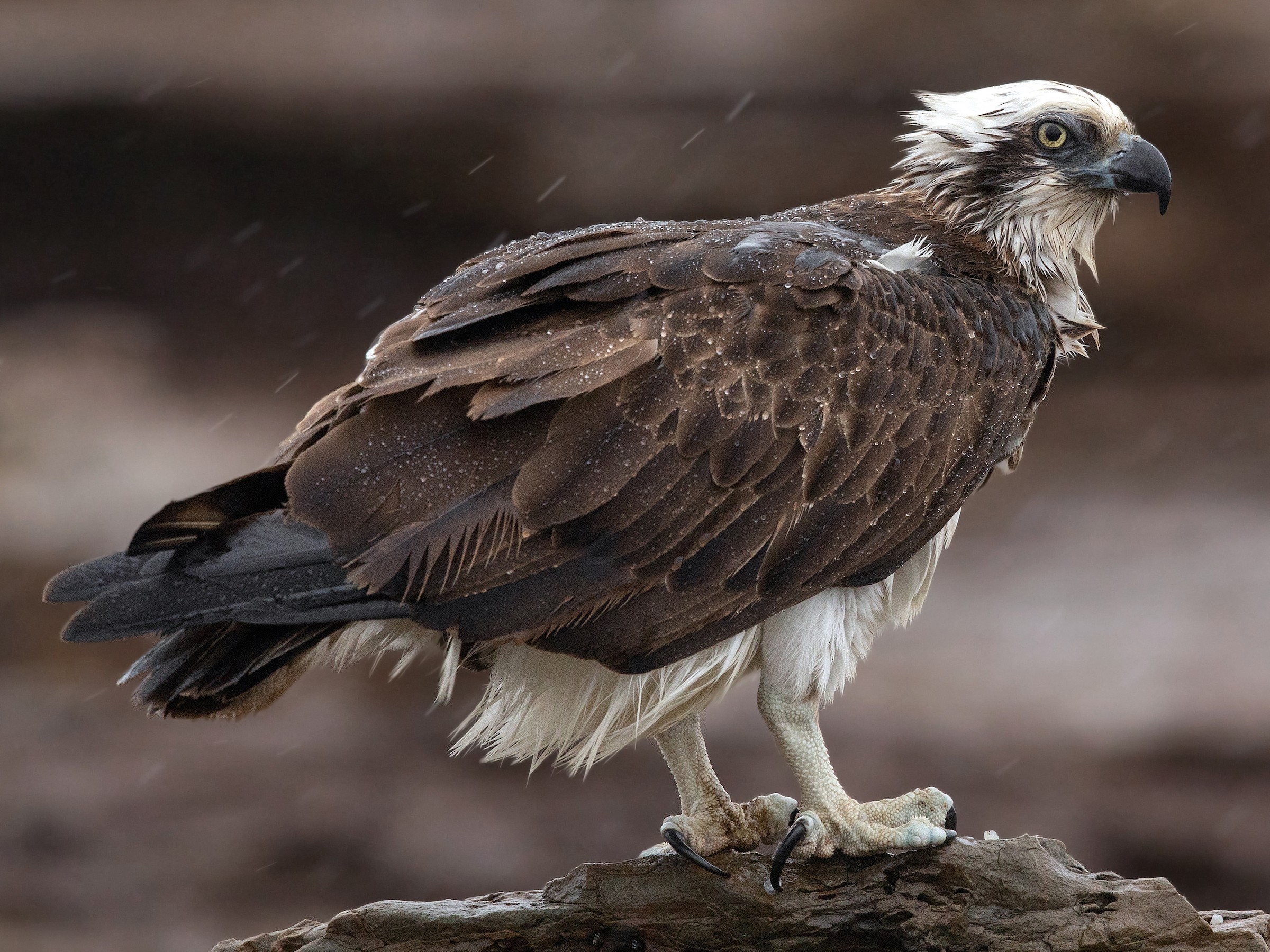
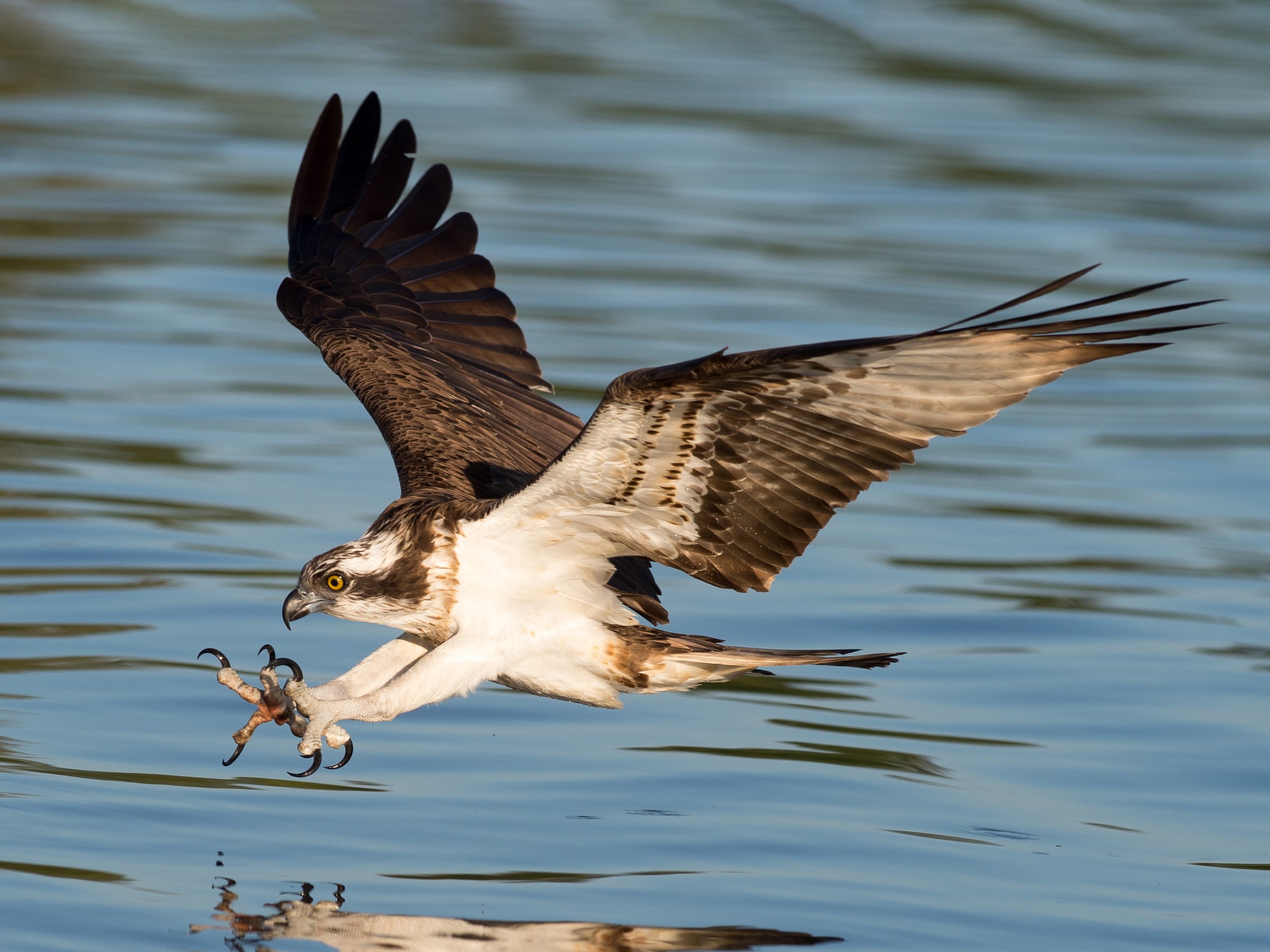
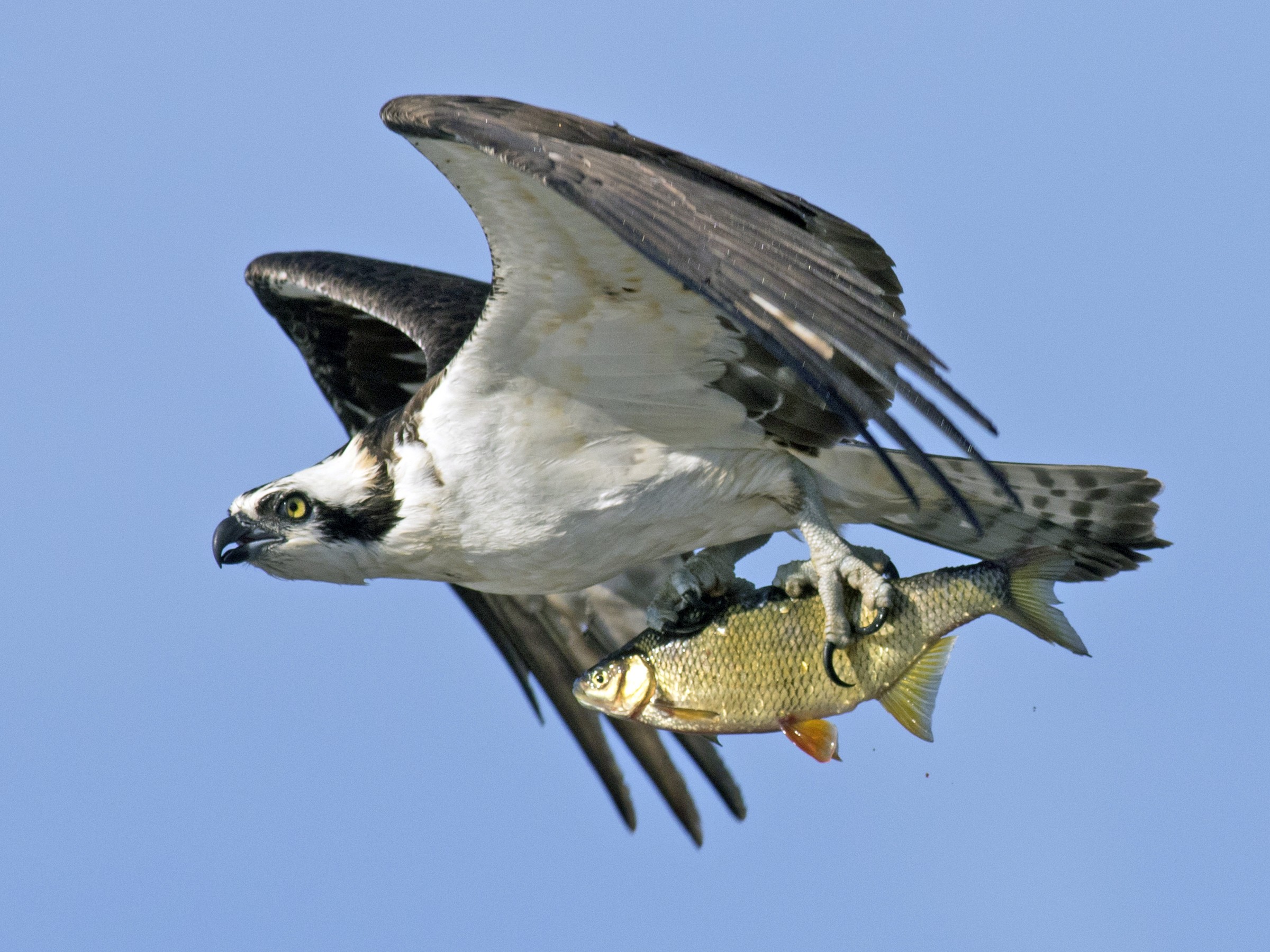
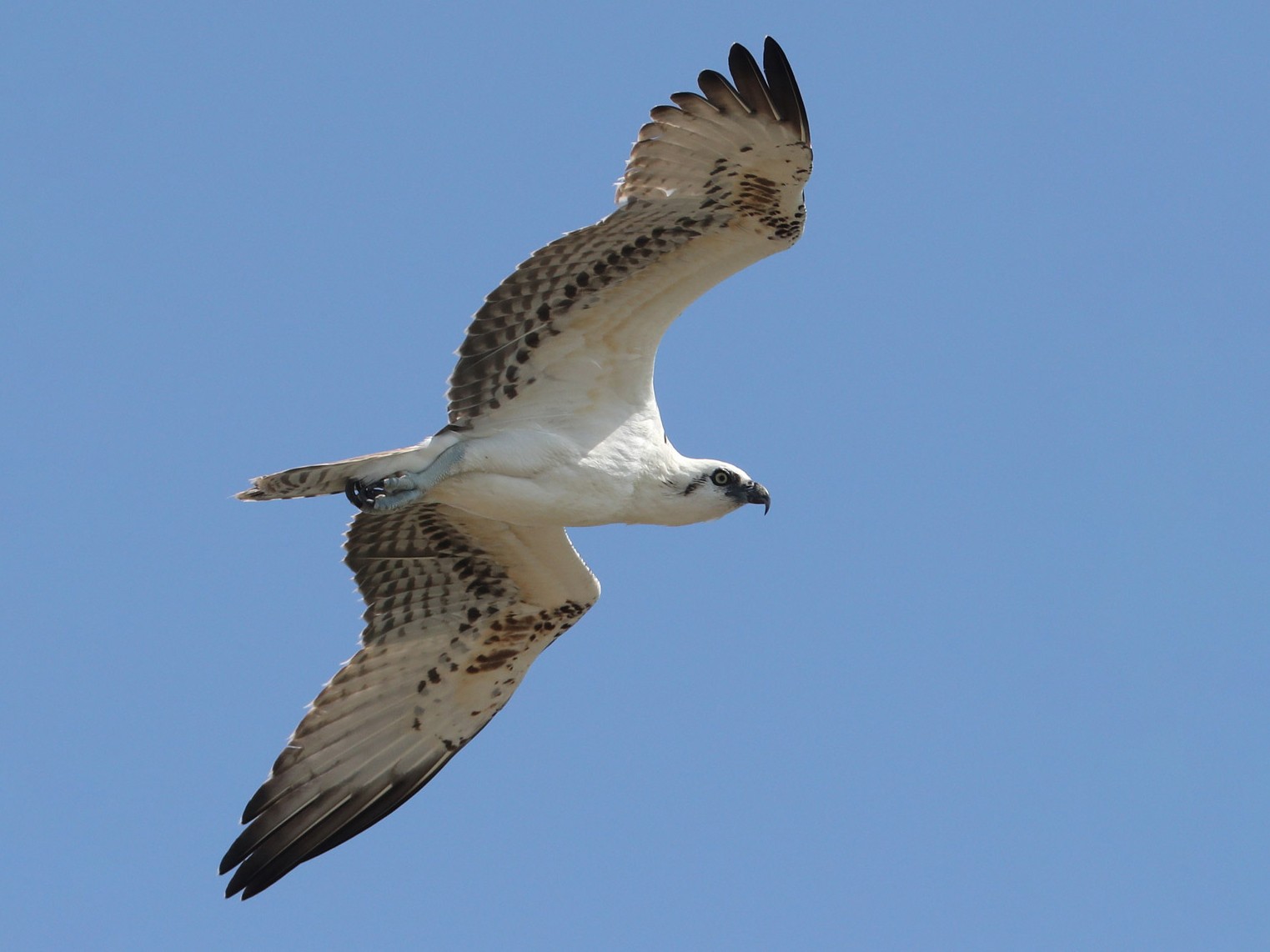
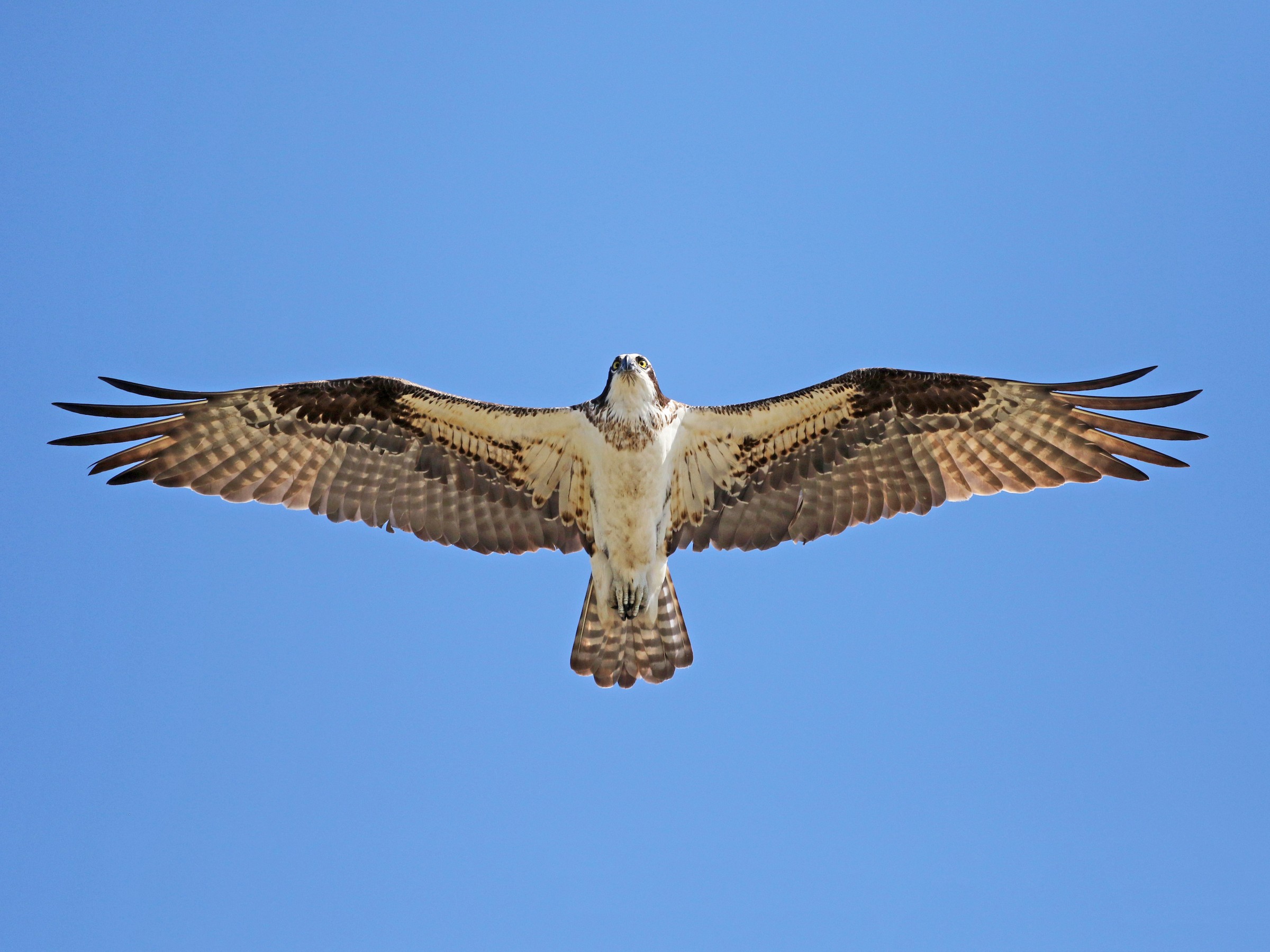

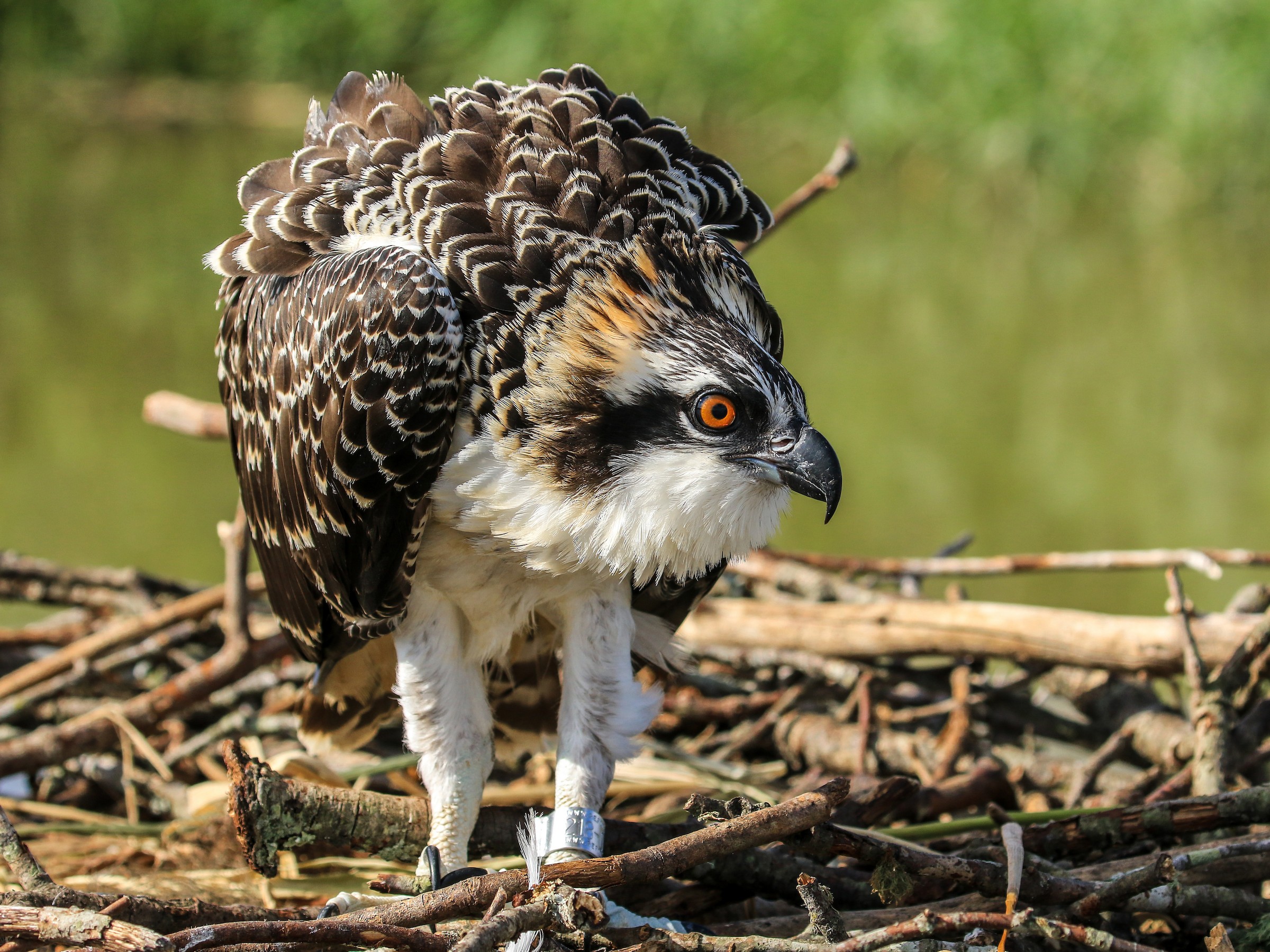


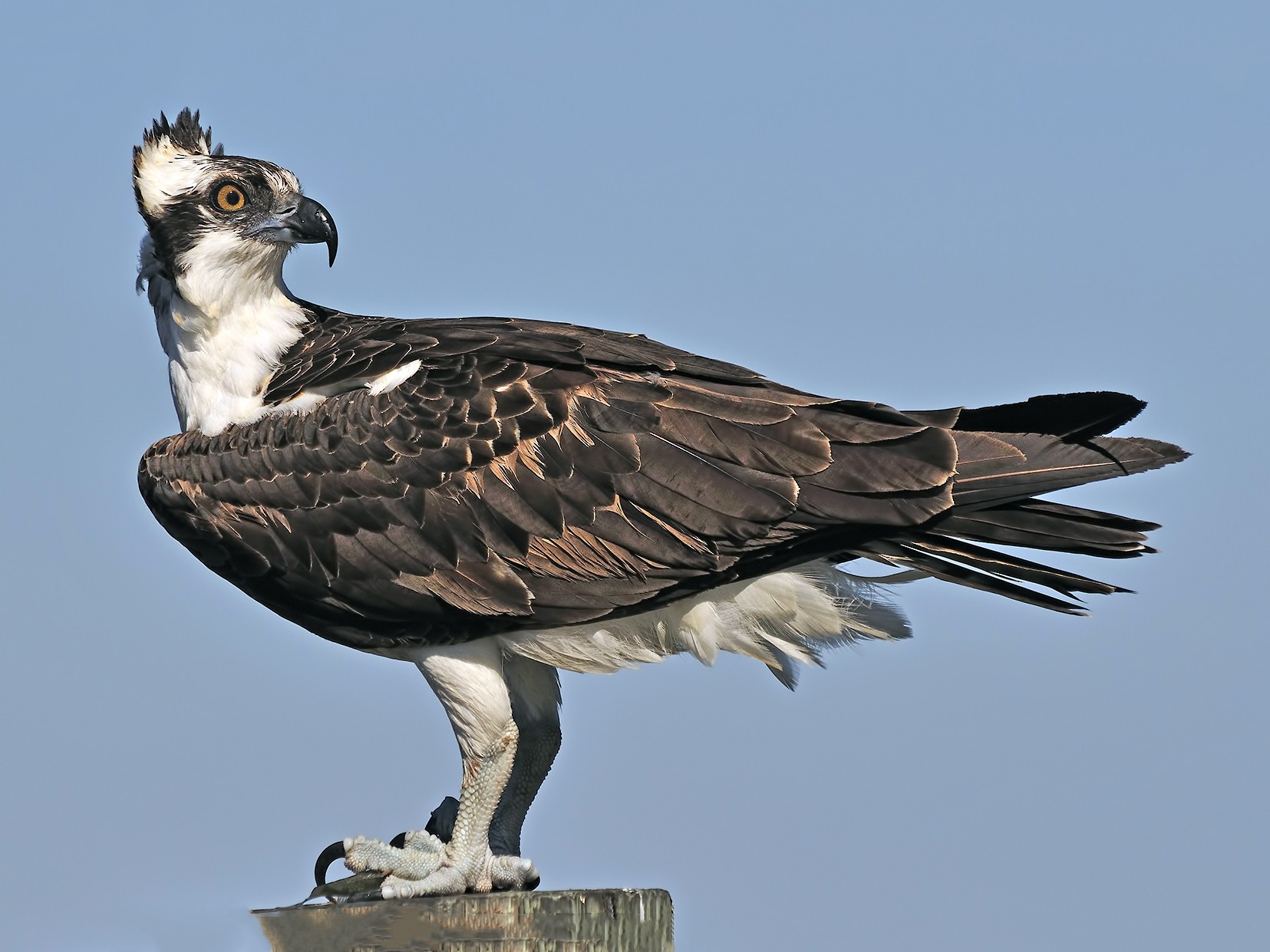
Key Takeaways
- Ospreys have specialized adaptations for fishing, including reversible outer toes and barbed footpads that help them grip slippery fish.
- These birds make incredible migrations, with some traveling over 4,000 miles between breeding and wintering grounds each year.
- Osprey pairs often mate for life and return to the same nest site year after year, adding new materials each season until nests can weigh up to 400 pounds.
Osprey Basics and Taxonomy
Ospreys stand out in the world of raptors with their unique features and specialized fishing abilities. They occupy a distinct position in bird taxonomy that reflects their specialized nature.
Defining Characteristics
Ospreys (Pandion haliaetus) are medium to large birds of prey with wingspans reaching 5-6 feet. They have distinctive dark brown upperparts contrasting with predominantly white underparts and a white head with a dark eye stripe.
Their physical adaptations for fishing are remarkable. Ospreys possess specialized talons with curved, sharp claws and unique reversible outer toes that allow them to grasp fish efficiently.
Their feet have spiny scales and short, dense oily feathers that help grip slippery prey.
Ospreys play a key role in aquatic ecosystems by controlling fish populations.
Ospreys commonly breed near bodies of water like lakes, rivers, and coastal areas. They’re the only raptor that dives feet-first into water, sometimes completely submerging to catch fish, which make up 99% of their diet.
Species Classification and Subspecies
Taxonomically, the Osprey belongs to order Falconiformes but stands in its own family, Pandionidae, and genus Pandion, with haliaetus as its sole species. This unique classification reflects the Osprey’s distinctive evolutionary path among raptors.
Ospreys can often be seen hunting along riverbanks and coastal areas.
While debate exists in Falconiformes taxonomy, researchers generally recognize four Osprey subspecies worldwide:
- P. h. haliaetus: Found in Europe, Asia, and Africa
- P. h. carolinensis: North American Osprey
- P. h. ridgwayi: Caribbean region
- P. h. cristatus: Australia and Pacific region
Though some taxonomists have proposed reclassifying Ospreys into separate species, most authorities maintain they constitute a single species with regional variations. On a global level, Ospreys are listed as “Least Concern” conservation status.
Physical Attributes
Ospreys possess remarkable physical characteristics that make them exceptional hunters and flyers. These birds have evolved specialized adaptations that set them apart from other raptors.
Distinctive Features and Talons
Ospreys have a striking appearance with white undersides and dark brown upper parts. Their heads are white with a distinctive dark eye stripe that runs across their face, giving them a masked appearance. This coloration provides excellent camouflage when hunting from above.
Their most impressive physical feature is their specialized talons. Unlike other birds of prey, ospreys have unique reversible outer toes that can rotate to grip fish more effectively. This adaptation allows them to position their catch aerodynamically while in flight.
The talons themselves are incredibly sharp and equipped with specialized barbs called spicules that help secure slippery fish. Their feet also have rough pads that further enhance their grip on wet prey.
Another unique adaptation is their nostrils, which can close when diving into water. This prevents water from entering their respiratory system during hunting dives.
Impressive Wingspan
Ospreys boast a wingspan ranging from 4.5 to 6 feet (1.4 to 1.8 meters), which is remarkable considering their body length of only 21-23 inches (53-58 cm). This impressive wingspan enables them to soar effortlessly for long periods.
Their wings have a distinctive bent shape when gliding, forming an M-like silhouette that helps birders identify them from a distance. This wing structure is perfectly adapted for their hunting style, allowing them to hover precisely over water before diving.
The Osprey’s wing design provides exceptional lift and maneuverability. Their feathers are dense and oily, which helps repel water after dives. This adaptation is crucial for the Sea Hawk, as they would struggle to fly with waterlogged feathers.
Their lightweight skeletal structure further enhances their flying ability, with hollow bones that reduce weight while maintaining strength.
Ospreys are known for their incredible hunting skills and impressive aerial displays.
The osprey’s hunting technique is a spectacle, often capturing the attention of wildlife enthusiasts.
Diet and Hunting Behavior
Young ospreys learn the essential skills of fishing by watching their parents.
Ospreys are remarkable birds of prey with highly specialized feeding habits. Their diet consists almost exclusively of fish, which they catch using impressive hunting techniques that have evolved specifically for capturing prey from water.
Predominantly Piscivorous Diet
Ospreys are often observed diving into the water to catch their prey with remarkable precision.
Ospreys are almost exclusively fish-eaters, making them unique among birds of prey. Fish comprise approximately 99% of their diet in most regions.
Male ospreys play a crucial role in family nutrition. They supply nearly all of the food for both the female and their nestlings during the breeding season.
The types of fish caught vary by location and availability. Ospreys aren’t picky – they’ll hunt whatever fish species are abundant in their territory. Common prey includes:
- Bass
- Perch
- Trout
- Catfish
- Mullet
Their diet can adapt to local conditions, but they strongly prefer live fish rather than scavenging dead ones.
Specialized Hunting Tactics and Techniques
Ospreys have evolved remarkable hunting abilities that set them apart from other raptors. Their feeding behavior is important to understand their ecological role.
When hunting, ospreys hover 30-100 feet above shallow waters, scanning for fish near the surface. They have exceptional eyesight that can detect fish even through water glare.
Once prey is spotted, the osprey dives feet-first toward the water, often partially submerging. Their specialized adaptations include:
- Reversible outer toe that allows them to grip fish with two toes in front and two behind
- Barbed foot pads that help grasp slippery fish
- Water-shedding plumage that prevents them from becoming waterlogged
After catching a fish, ospreys will reposition it to face forward for aerodynamic flight. They typically seek a perch to consume larger fish, though they may eat smaller ones while flying.
Habitat and Distribution
Ospreys thrive in diverse environments across the globe, always near water bodies that provide their primary food source. They adapt to various landscapes from coastal regions to inland lakes, with specific preferences that have helped them maintain a widespread but uneven distribution pattern.
Preferred Habitats
Ospreys require two essential habitat features: open, accessible water with abundant fish and suitable structures for nesting. They establish territories near lakes, rivers, coastal areas, and reservoirs where fish are plentiful and hunting conditions are favorable.
These raptors build large stick nests on tall structures that offer visibility and protection. Natural nest sites include dead trees and cliffs, but ospreys readily adapt to human-made structures like utility poles, channel markers, and specially designed nesting platforms.
Water quality directly impacts osprey populations, as they depend entirely on healthy fish stocks. They prefer shallow waters where fish are easier to spot and catch from their hunting height of 30-100 feet above the surface.
Global Range and Distribution
Ospreys have one of the most extensive distributions of any bird of prey, appearing on every continent except Antarctica.
Their range spans North America, Europe, Asia, Africa, and parts of Australia.
In North America, osprey populations are densest along coastal areas of the Atlantic, Pacific, and Gulf of Mexico, as well as around the Great Lakes and major river systems.
After significant declines during the DDT era, restoration efforts have successfully reintroduced ospreys to many regions where they had disappeared.
Distribution patterns show that ospreys have limited ability to pioneer new habitats beyond 100 km from existing nesting concentrations.
Ospreys thrive in various habitats where fish are abundant.
This explains why some seemingly suitable habitats remain unoccupied despite healthy populations nearby.
Reproduction and Life Cycle
Ospreys have one of the most remarkable reproductive cycles in the bird world.
Their breeding behaviors and parental care showcase their exceptional adaptations as fishing raptors and dedicated parents.
During migration, ospreys can travel thousands of miles in search of suitable habitats.
Mating and Nesting Practices
Ospreys are monogamous birds that often mate for life.
Pairs typically return to the same nest site year after year, with breeding ecology studies showing strong nest site fidelity.
They build massive nests called eyries, primarily in high locations like dead trees, cliffs, or man-made structures such as utility poles and nesting platforms.
Nest construction is a shared responsibility, with males gathering most materials and females arranging them.
These impressive structures can reach 3-6 feet in diameter and weigh up to 200 pounds as materials accumulate over years of use.
Courtship involves aerial displays, with males performing spectacular sky-dances that include hovering with dangling legs and carrying fish to present to females.
These communicative behaviors are crucial to their mating success.
Eggs and Incubation Period
Female ospreys typically lay 2-4 eggs per clutch, with eggs appearing creamy white with reddish-brown blotches.
The eggs are laid at 1-3 day intervals rather than all at once.
Incubation begins when the first egg is laid and lasts approximately 36-42 days.
Both parents share incubation duties, though females handle about 70% of this responsibility while males focus on fishing.
This reproduction phase is particularly vulnerable to environmental contaminants, which historically affected osprey populations.
Studies have shown that chemicals like DDT caused eggshell thinning, leading to crushing and reproductive failure before these substances were banned.
Young Ospreys and Fledging
Osprey chicks hatch asynchronously (not all at once), creating a size hierarchy among siblings. This adaptation ensures at least some offspring survive if food becomes scarce.
Nestlings remain in the nest for 50-55 days, with both parents providing care.
Males deliver fish while females feed and protect the young.
The chicks grow remarkably fast, reaching nearly adult size before fledging.
After leaving the nest, young ospreys spend 1-2 months learning to fish under parental guidance.
They practice diving techniques and catching skills until they become independent.
Young ospreys typically migrate separately from adults and won’t breed until they’re 3-4 years old.
The average lifespan of wild ospreys is 7-10 years, though some individuals have lived well beyond 20 years.
Their reproductive success has made them excellent indicators of environmental health in many aquatic ecosystems.
Survival Challenges and Predators
Ospreys have a unique hunting style that distinguishes them from other birds of prey.
Ospreys face numerous threats in the wild that affect their survival rates. While these remarkable birds have adapted to many challenges, both natural predators and human activities continue to impact their populations worldwide.
Natural Threats and Predators
Ospreys must contend with several natural predators throughout their lifecycle.
Eagles, particularly Bald Eagles, are known to attack osprey nests and steal their fish.
Great Horned Owls pose a significant threat, especially to nestlings during nighttime hours.
Raccoons, snakes, and other climbing mammals may raid nests when they’re built in accessible locations.
These nest predators can significantly impact breeding success rates.
Weather events like severe storms and flooding can destroy nests and kill young birds. Disease and parasites also threaten osprey populations, particularly during periods of stress or when natural immunity is compromised.
To maintain healthy osprey populations, conservation efforts are crucial.
Despite these challenges, adult ospreys maintain an impressive 90% annual survival rate under favorable conditions, showcasing their remarkable resilience as a species.
Human-Caused Risks and Conservation Efforts
Historically, the most devastating human impact on ospreys came from widespread use of DDT, a pesticide that caused eggshell thinning and reproductive failure. This nearly led to their extinction in many regions during the mid-20th century.
Habitat loss continues to threaten ospreys as coastal development, logging, and wetland destruction eliminate suitable nesting sites.
Collisions with power lines and entanglement in fishing gear cause numerous osprey deaths annually.
Conservation efforts have been remarkably successful, including:
- Banning DDT in many countries
- Creating artificial nesting platforms
- Implementing protected areas for breeding grounds
- Monitoring programs to track population health
As top avian predators, ospreys serve as environmental sentinels. Their recovery demonstrates effective conservation but challenges remain, especially in regions where shooting, trapping, and environmental contamination persist.
Osprey and Human Interaction
Ospreys have a complex relationship with humans, influencing both our cultural history and how we design modern infrastructure. Their presence in human environments has sparked both conservation challenges and opportunities for education and research.
Historical Significance and Symbolism
Ospreys have greeted humans throughout history, often nesting near early human settlements.
These birds hold symbolic meaning in many cultures as representatives of vision, independence, and fishing prowess.
Unlike Bald Eagles, which became prominent national symbols, ospreys (sometimes called fish hawks or sea hawks) represent more localized cultural significance.
Some sports teams, like the Seattle Seahawks, draw inspiration from these skilled hunters.
Native American tribes often viewed ospreys as spiritual messengers between water and sky worlds. Their fishing ability made them symbols of abundance and sustenance in coastal communities worldwide.
The osprey’s dramatic diving technique has captivated human observers for centuries, earning them respect as one of nature’s most specialized hunters.
Conservation Status and Legal Protection
Ospreys faced severe population declines in the mid-20th century due to DDT contamination, which weakened their eggshells and reduced breeding success. This crisis prompted conservation action that helped restore their numbers.
Today, ospreys are protected under the Migratory Bird Treaty Act in the United States, making it illegal to harm these birds or disturb their nests without permits.
Conflicts between ospreys and humans typically occur during nesting season when these birds build nests on utility poles, cell towers, and other structures.
Ospreys have adapted well to human activities, often nesting near populated areas.
These interactions have prompted creative solutions like dedicated nesting platforms.
Many conservation organizations use osprey webcams and educational programs to raise awareness about these birds.
Their recovery represents one of wildlife management’s success stories.
Ongoing research monitors contaminant levels in osprey populations as indicators of ecosystem health, especially in aquatic environments.
Unique Behaviors and Communication
Ospreys have developed specialized behaviors and communication methods that help them survive as fishing specialists. Their distinctive vocalizations and remarkable flight abilities set them apart from other raptors in the bird world.
Vocalizations and Calls
Ospreys use several distinct calls for communication in their daily lives.
The alarm call—a sharp, high-pitched “cheep-cheep-cheep”—alerts others to potential threats near the nest. This call increases in intensity when danger approaches.
Many conservation organizations focus their efforts on protecting osprey habitats and nesting sites.
The guard call, a loud “kew-kew-kew,” is used primarily by males to announce territory ownership. Female ospreys typically respond with a softer, higher-pitched version when greeting their mates.
During courtship, pairs engage in call-and-response duets that strengthen their bond. These vocalizations help coordinate parental duties like nest relief and food delivery.
Young ospreys develop a distinctive hunger call that becomes more persistent as feeding time approaches. This behavior ensures parents prioritize feeding the most vocal chicks.
Flight Patterns and Migration
Ospreys display remarkable flight behaviors adapted to their fishing lifestyle.
Their distinctive hover-dive sequence involves suspended flight 50-150 feet above water, followed by a dramatic plunge feet-first to catch fish.
During migration, ospreys travel impressive distances between breeding and wintering grounds.
North American ospreys typically migrate 2,000-4,000 miles, with some individuals traveling over 160 miles daily during peak migration periods.
Unlike many migratory birds, ospreys travel alone rather than in flocks.
Youthful ospreys make their first migration without parental guidance, relying purely on instinct to navigate these challenging journeys.
Ospreys often use thermal updrafts and wind currents to conserve energy during long-distance flights.
Their large wingspan and light body weight create excellent gliding capabilities.
Interesting Trivia
Ospreys migrate to locations where food sources are plentiful during the winter.
Ospreys, also known as Fish Hawks or Fish Eagles, have captivated human attention for centuries with their remarkable fishing abilities and distinct appearance.
These powerful raptors feature in both cultural representations and scientific studies that highlight their unique adaptations.
Ospreys in Popular Culture
The osprey has earned notable recognition in sports and regional symbols.
Several sports teams have adopted the Seahawk or Osprey as their mascot, including the NFL’s Seattle Seahawks, whose logo draws inspiration from Pacific Northwest Native American art.
In literature, ospreys often symbolize freedom and resilience.
Their dramatic dives for fish have been featured in numerous nature documentaries, showcasing their hunting precision.
The osprey’s comeback from near extinction due to DDT poisoning in the mid-20th century has made it a conservation success story.
This recovery has been documented extensively and celebrated in environmental campaigns.
Remarkable Osprey Facts
Ospreys have specialized physical adaptations that set them apart from other raptors.
Their reversible outer toe allows them to grasp fish with two toes forward and two backward, providing a secure grip on slippery prey.
Ospreys have become symbols of successful conservation efforts worldwide.
These birds have dense, oily plumage that prevents them from becoming waterlogged when diving. They possess closable nostrils that keep water out during dramatic plunges.
One striking fact is that ospreys banded in Cape May County were later found in Cuba, demonstrating their impressive migration patterns.
The osprey’s diet consists of approximately 99% fish, making it among the most specialized hunters in the raptor world.
Unlike eagles, ospreys can dive up to three feet into water to catch fish, emerging with their prey oriented head-first for aerodynamic flight.
Frequently Asked Questions
Ospreys have developed remarkable features and behaviors that help them thrive in their environments.
These raptors play important ecological roles and face various challenges in the wild.
What unique adaptations do ospreys have for hunting?
Ospreys possess specialized adaptations that make them exceptional fishers.
Their feet have reversible outer toes and spiny footpads that help them grip slippery fish.
Their wings are designed to hover effectively over water, allowing them to spot prey from heights of 30-100 feet. Ospreys have excellent vision that can detect fish underwater from significant distances.
Unlike most birds, ospreys dive feet-first into water and can close their nostrils when plunging. They also have a specialized shoulder joint that helps absorb the impact when hitting water at high speeds.
How do ospreys contribute to their ecosystems?
Ospreys serve as important ecological indicators of environmental health in aquatic ecosystems.
Their sensitivity to water pollution makes them sentinel species for monitoring environmental contamination in rivers, lakes, and estuaries.
As predators, ospreys help control fish populations in their habitats. Their nesting habits also create habitat opportunities for other species that may use abandoned osprey nests.
Ospreys have significant educational value and are used in environmental education programs to teach about raptors, migration, and ecosystem health.
What are the migration patterns of ospreys?
Ospreys are long-distance flyers with impressive migration routes.
North American ospreys typically migrate to Central and South America for winter, traveling up to 5,000 miles each way.
European ospreys often winter in Africa, crossing the Mediterranean Sea and Sahara Desert. Some osprey populations in warmer regions like Florida and parts of Australia may not migrate at all.
Tracking studies show ospreys can travel 200-300 miles per day during migration.
Youthful ospreys undertake their first migration alone, relying on instinct rather than learned behavior.
How do ospreys care for their young?
Osprey pairs are generally monogamous and often return to the same nest site each year.
The female typically lays 2-4 eggs, which both parents take turns incubating for about 35-40 days.
After hatching, the male does most of the hunting while the female primarily cares for the chicks.
Young ospreys begin flying at about 50-55 days old but remain dependent on parents for food for several more weeks.
Parents teach their young to hunt through demonstration and by dropping dead fish in the water for fledglings to retrieve.
This practice helps develop the diving and fishing skills needed for survival.
What threats do ospreys face in the wild?
Habitat loss remains a significant challenge for ospreys, particularly the destruction of nesting sites and degradation of fishing grounds.
Environmental contaminants like pesticides and heavy metals can accumulate in their bodies through the fish they eat.
Through careful observation, young ospreys learn valuable hunting lessons from their parents.
Human disturbance near nesting sites can disrupt breeding success. Collisions with power lines and other human structures cause injuries and deaths among these birds.
Climate change affects fish populations and water levels, potentially reducing prey availability.
In some regions, competition with other raptors for nesting sites creates additional pressure.
What conservation efforts are in place to protect osprey populations?
Artificial nesting platforms have been highly successful in helping osprey populations recover in many regions.
These structures provide safe nesting sites away from predators and human disturbance.
Legal protections such as the Migratory Bird Treaty Act in the United States safeguard ospreys from hunting and harassment.
The ban on DDT and similar pesticides has been crucial for the revival of osprey populations.
Monitoring programs track osprey populations to identify threats and measure conservation success.
Public education initiatives help raise awareness about osprey conservation needs and reduce human disturbance of nesting sites.
Ospreys’ adaptability to urban environments showcases their resilience as a species.

